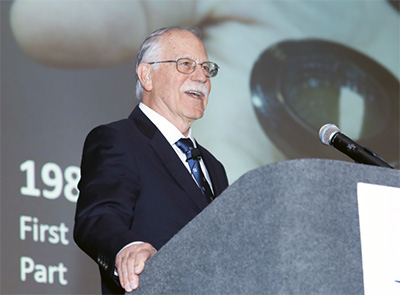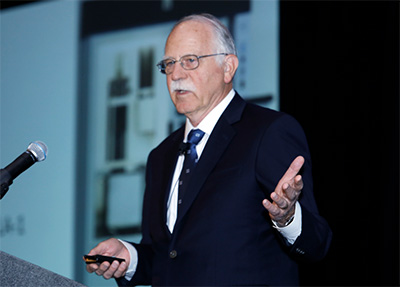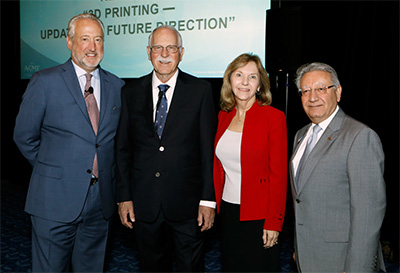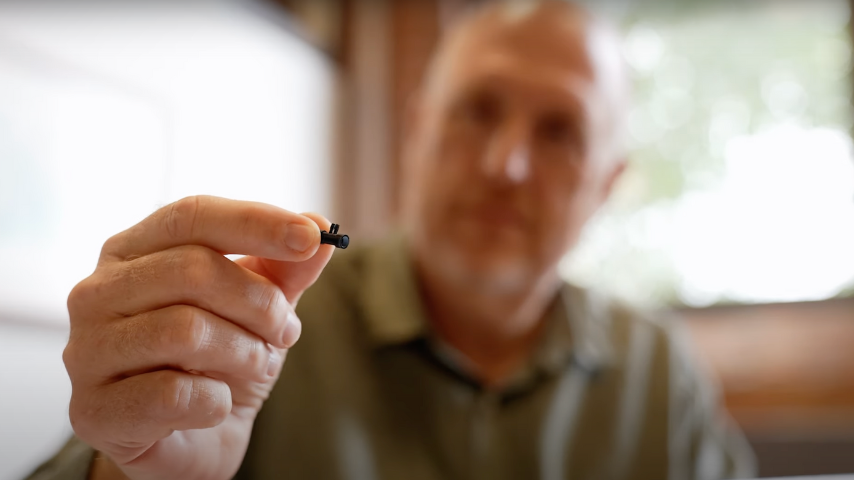IMECE Keynote Speaker Chuck Hull Explores the Topic of 3D Printed Organs
IMECE Keynote Speaker Chuck Hull Explores the Topic of 3D Printed Organs
Nov. 20, 2017

During his presentation at the Opening Keynote at the ASME 2017 International Mechanical Engineering Congress and Exposition in Tampa earlier this month, Chuck Hull discussed what he believes is an important frontier for advanced manufacturing: regenerative medicine.
“The idea is to print something that will help the body heal itself,” Hull told the crowd of more than 700 engineers attending the event on Nov. 6. “This really combines this wonderful growing field of biotechnology with 3D printing.”
Hull is the co-founder of 3D Systems, and is widely considered the inventor of 3D printing. In 1983, working on an idea to speed prototyping, he developed an apparatus to make small, solid objects using ultraviolet light to cure thin, successive layers of a liquid photopolymer. Hull called the process “stereolithography.” In 2016, that first system, the SLA-1, was designated an ASME Historic Mechanical Engineering Landmark.

Hull described the arc of 3D printing from that first machine to the thousands of applications for 3D printing today, especially in the automotive industry, in aerospace and in healthcare.
Looking ahead, Hull spoke enthusiastically about saving lives. “There are about 31,000 lung transplants a year in the United States,” Hull said. “The waiting list is about four times that. There is a huge unmet need beyond that. There are about 900,000 deaths in the United States alone from organ impairment. If we could figure out how to manufacture these organs, it would be a huge benefit to the health of society.”
Hull said researchers are about six years away from clinical trials with a bioprinted lung. He described some of the steps such as using microscanning and other techniques to improve our understanding of how organs work; studying the collagen scaffolds that physically support cells in these organs; learning to 3D print scaffolds with collagen-based materials, using printers with a resolution two orders of magnitude higher than what is available today; and growing billions of organ cells. “The final process is to infuse those cells into the scaffold and bring the lung back to life and make it available for transplant,” he said.

In addition to the promise of regenerative medicine, Hull pointed to advances in the use of 3D printing in the custom manufacture of hearing aids, dental products, surgical aids and implants. Hull told the dramatic story of two conjoined twins who shared blood vessels woven between their brains. In this case, 3D imaging and 3D printing were used to create models for planning separation surgery. A 27-hour operation last year at Montefiore Medical Center in the Bronx successfully separated the twin boys. As he showed the audience a photo of the boy’s mother, for the first time, holding just one of her sons, Hull said, “This picture, for me, makes the 34 years I’ve spent working in this field worthwhile; this is the mother the first time she held this child.”
During his presentation, Hull described the special role that 3D printing has played in Detroit. “Automotive was really the first industry that started adopting 3D printing,” he said. “Back in the late 1980s, the U.S. auto industry was having difficulty with time-to-market. From the time a design was conceived until it was produced was taking a long time, compared to some of the foreign competition. And quality was not that good. So engineers in Detroit were looking for new technology, new approaches. Solid CAD came along about that time and so did 3D printing. Those two combined for lots of rapid prototyping and rapid tooling applications in Detroit. That launched 3D printing in industry. “

Hull also described a future in which 3D printing plays a much larger role in manufacturing. He cited opportunities made possible by advances in materials, software and speed. “3D printers don’t look like things that go on the factory floor.” Hull said. “So there is a lot of industrial integration that needs to be done in order to achieve the dream of mass production.” Hull added that 3D Systems and its competitors are working to make 3D printing more manufacturing-friendly with improved plastics and metals, faster printers, systems of ganged printers, and the automation of post-processing tasks, including inspection.
- Roger Torda, Public Information




